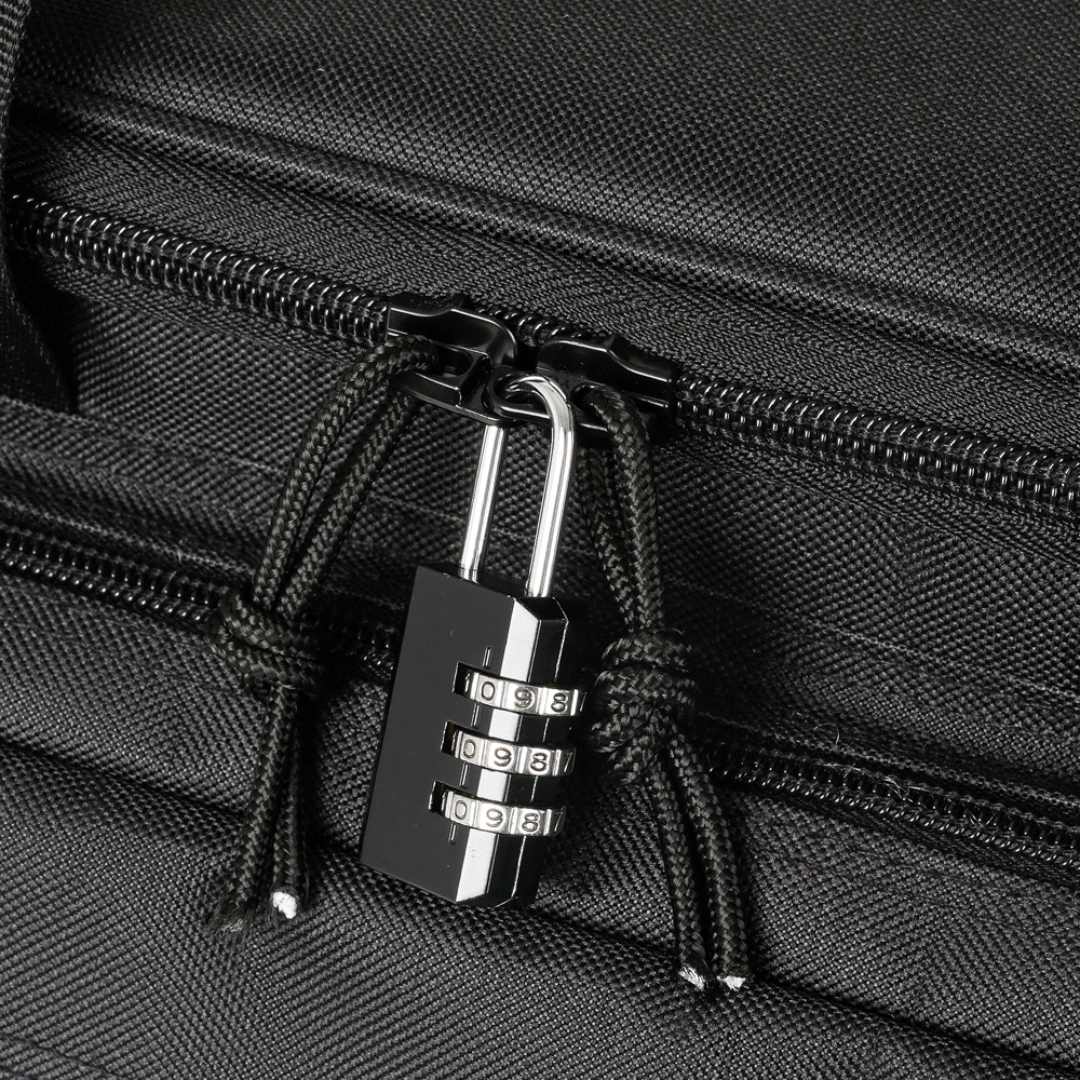
Thieves can steal a rifle in under 30 seconds—unless your case makes their job harder. While no case offers perfect protection, today's options range from basic key locks to sophisticated biometric systems, each with distinct advantages and limitations. The right security features for your situation can significantly reduce theft risk, keeping your firearm secure whether stored at home or during transport.
Types of Rifle Case Anti-Theft Features

Basic Locking Mechanisms
Integrated Keyed Locks
Hard rifle cases often come with built-in locks requiring physical keys. These simple metal latches create an initial barrier against theft. While basic, they force thieves to either pick the lock or damage the case, deterring quick grab-and-run thefts.
Padlock Compatibility
Many cases feature metal loops or hasps designed for external padlocks. Hard cases typically have steel loops that resist cutting, while soft cases include reinforced zipper pulls with padlock holes. This allows you to choose your security level based on padlock quality.
Advanced Locking Systems
Combination Locks
These keyless locks require specific number sequences for access. Found built into cases or as separate padlocks, they eliminate lost key risks. Premium models allow user-set combinations, though forgotten codes may require destructive entry methods.
Biometric Locks
Using fingerprint recognition technology, these provide quick access only to authorized users. Typically found on high-end cases or as add-on padlocks, they offer convenience with security. Most include backup key systems for when the electronics fail.
Electronic Locks with Keypads
Digital code locks offer programmable security, with some featuring alarm functions after failed attempts. Better models include tamper alerts and memory systems that maintain codes during battery changes. Their primary advantage is customizable access without biometric complications.
Attachment and Immobilization Features
Cable Locks
Steel security cables anchor cases to fixed objects, preventing entire-case theft. Some cases include integrated cables while others have attachment points for aftermarket options. Their effectiveness depends entirely on cable thickness and material quality.
Anchor Points/Mounting Options
Many security-focused cases include pre-drilled mounting holes or brackets for permanent installation. These features allow securing cases to vehicles, walls, or floors, requiring significant tools and time to remove. This dramatically reduces theft during storage or transport.
Effectiveness of Anti-Theft Features
Visual Deterrence Works
The most effective security feature is often the most visible one. When thieves see multiple locks, reinforced cases, or security cables, they typically move on to easier targets. This psychological deterrence requires no special technology—simply making your case look difficult to breach prevents most theft attempts. Gun owners who display their cases with visible security features report significantly fewer theft attempts than those who rely on concealment alone.
Lock Quality Matters More Than Type
Basic keyed locks stop casual thieves but can be defeated in minutes by those with simple tools. Tests show that budget locks (under $15) can be picked or broken within 3-5 minutes, while quality locks ($30+) resist the same attacks for 15+ minutes. The lock's construction—not whether it's keyed, combination, or electronic—determines its actual security level. A quality padlock often provides better protection than a mediocre built-in electronic system.
Hard Cases Significantly Outperform Soft Cases
When comparing theft resistance, hard cases consistently demonstrate superior protection. Soft cases can be slashed open in seconds with a pocket knife, regardless of their locking systems. Hard polymer or aluminum cases force thieves to attack the locks directly, extending breach time from seconds to minutes. This time difference often determines whether a theft succeeds or fails, especially in public settings where thieves avoid lengthy attempts.
Combination Systems Reduce Key Vulnerabilities
Combination locks effectively eliminate key-related security weaknesses. Lost or copied keys account for approximately 15% of successful firearm thefts, a risk completely avoided with combination systems. However, the protection is only effective when owners avoid common combinations (like birthdays) and regularly change their codes. Simple combinations can often be guessed within minutes by experienced thieves.
Biometric Systems Balance Security and Access
Fingerprint locks provide excellent security while maintaining quick access for authorized users. In practical use, quality biometric systems reject unauthorized users 99.9% of the time while correctly identifying owners 95%+ of the time. This balance makes them particularly effective for cases that need frequent access. Their major weakness remains environmental sensitivity—performance degrades significantly in extremely cold or wet conditions.
Limitations of Anti-Theft Features
Vulnerability of Basic Locks
Keyed locks and padlocks suffer from fundamental weaknesses despite their widespread use. Standard lock-picking tools can defeat most keyed mechanisms within minutes, while bolt cutters easily sever padlocks under $50. Even quality locks remain vulnerable to determined attacks—impact methods can shatter internal components without picking skills, and specialized tools available online make these techniques increasingly accessible to amateurs. High-security alternatives exist but their bulk, weight, and cost make them impractical for most traveling gun owners.
Circumventing Advanced Locks
Sophisticated locking systems face their own vulnerabilities despite technological advances. Combination locks with their limited possible combinations can be systematically tried or manipulated by feeling for mechanical feedback. Biometric systems fail in challenging environmental conditions (wet, cold, dirty) and may be fooled by lifted fingerprints on budget models. Electronic locks depend entirely on battery power and circuit integrity, creating failure points during power depletion or extreme temperatures, while lacking the long-term reliability of purely mechanical alternatives.
Cable Lock Vulnerabilities
Security cables create only moderate barriers against prepared thieves. Standard cable cutters defeat thinner cables instantly, while even hardened 3/8-inch versions succumb to battery-powered tools in under a minute. Their effectiveness depends entirely on proper anchoring—many owners secure cables to easily defeated attachment points like seat frames or thin vehicle panels. Some thieves simply bypass cables by dismantling cases around attachment points or cutting accessible parts of the vehicle itself.
Protect Your Firearm with Thoughtful Case Security!
No single rifle case security feature is perfect. The most effective approach uses a combination of visible deterrents, quality locks, and anchoring systems. However, each has weaknesses, from basic locks being easily picked to high-tech solutions having vulnerabilities. Carefully consider your needs and use multiple layers of security for the best protection against theft, whether storing your firearm at home or transporting it.
